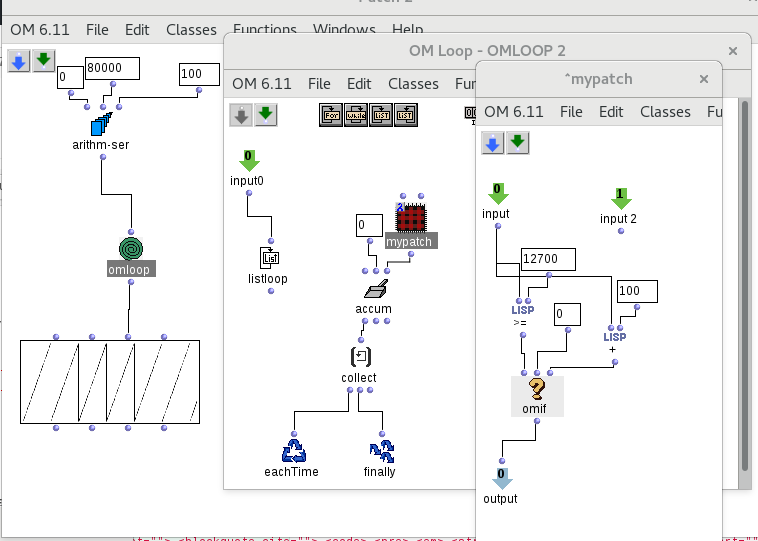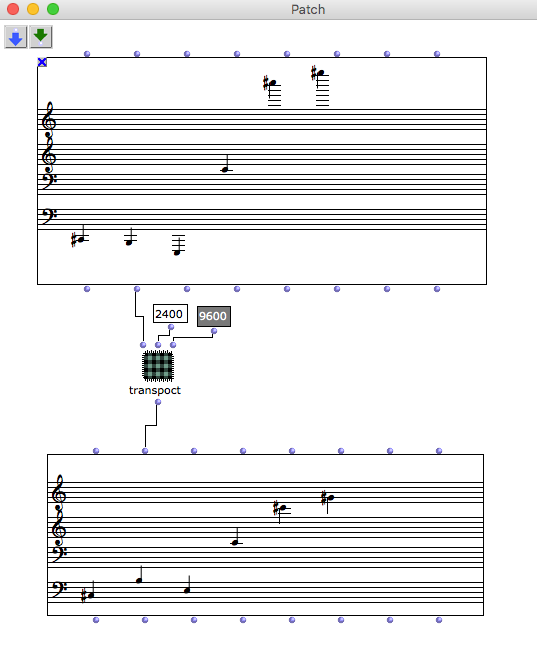Hello,
I recently discovered Openmusic and now I have some kind of problem.
I have a pretty long series of numbers which are getting very big to the end. When I play those values
it seems that the player is transposing every note over 12700 (maximum midicents value) I guess (I can’t see the notes
in the player, because they are to high up and I can’t scroll up) down as if the values over 12700 start
at octave one again. That is all fine.
But I can’t extract a midi-file with these values and be keeping the “transposition” by the player. So what I want to
do in Openmusic now is a iteration of the following process:
taking the members up to 12700 out and substracting 12700 from the rest
Those members which get taken out are all supposed to come into a new list which keeps the order of the original one but
with no member above 12700 and the rest will be fed to the process again.
I tried to do it with OMLoop, but as I see it you can only do iterative processes on one single list but on my case I have
to change the processed list every iteration.
Could someone tell me what I’m doing wrong or what would be a better way to achieve that.
Thank you in advance!


